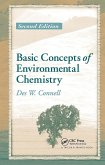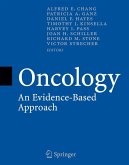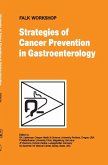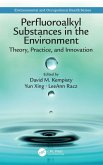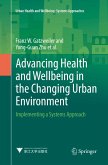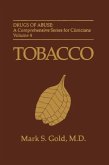Nicolopoulou-Stamati
Cancer as an Environmental Disease
Herausgegeben:Nicolopoulou-Stamati, Polyxeni; Hens, Luc; Howard, Vyvyan C.
Schade – dieser Artikel ist leider ausverkauft. Sobald wir wissen, ob und wann der Artikel wieder verfügbar ist, informieren wir Sie an dieser Stelle.
Nicolopoulou-Stamati
Cancer as an Environmental Disease
Herausgegeben:Nicolopoulou-Stamati, Polyxeni; Hens, Luc; Howard, Vyvyan C.
- Gebundenes Buch
- Merkliste
- Auf die Merkliste
- Bewerten Bewerten
- Teilen
- Produkt teilen
- Produkterinnerung
- Produkterinnerung
These pages contain a number of chapters from specialists in the field who consider, from a number of different perspectives, the currently available evidence that supports the environmental cancer aetiology hypothesis. This constitutes the first part of the book. In the second part of the book, an examination of the policy implications of accepting that the cancer epidemic may essentially be preventable is presented. This will pose some difficult problems for politicians and decision-makers, who will have to consider adopting policies that may damage the economy in the short term in order to…mehr
Andere Kunden interessierten sich auch für
![Basic Concepts of Environmental Chemistry Basic Concepts of Environmental Chemistry]() Des W ConnellBasic Concepts of Environmental Chemistry155,99 €
Des W ConnellBasic Concepts of Environmental Chemistry155,99 €![Oncology Oncology]() Alfred E. Chang / Patricia A. Ganz / Daniel F. Hayes / Timothy Kinsella / Harvey I. Pass / Joan H. Schiller / Richard M. Stone / Victor Strecher (eds.)Oncology242,99 €
Alfred E. Chang / Patricia A. Ganz / Daniel F. Hayes / Timothy Kinsella / Harvey I. Pass / Joan H. Schiller / Richard M. Stone / Victor Strecher (eds.)Oncology242,99 €![Principles of Environmental Thermodynamics and Kinetics Principles of Environmental Thermodynamics and Kinetics]() Kalliat T ValsarajPrinciples of Environmental Thermodynamics and Kinetics206,99 €
Kalliat T ValsarajPrinciples of Environmental Thermodynamics and Kinetics206,99 €![Strategies of Cancer Prevention in Gastroenterology Strategies of Cancer Prevention in Gastroenterology]() Strategies of Cancer Prevention in Gastroenterology154,99 €
Strategies of Cancer Prevention in Gastroenterology154,99 €![Perfluoroalkyl Substances in the Environment Perfluoroalkyl Substances in the Environment]() Perfluoroalkyl Substances in the Environment220,99 €
Perfluoroalkyl Substances in the Environment220,99 €![Advancing Health and Wellbeing in the Changing Urban Environment Advancing Health and Wellbeing in the Changing Urban Environment]() Franz W GatzweilerAdvancing Health and Wellbeing in the Changing Urban Environment77,99 €
Franz W GatzweilerAdvancing Health and Wellbeing in the Changing Urban Environment77,99 €![Tobacco Tobacco]() Mark S. GoldTobacco62,99 €
Mark S. GoldTobacco62,99 €-
-
These pages contain a number of chapters from specialists in the field who consider, from a number of different perspectives, the currently available evidence that supports the environmental cancer aetiology hypothesis. This constitutes the first part of the book. In the second part of the book, an examination of the policy implications of accepting that the cancer epidemic may essentially be preventable is presented. This will pose some difficult problems for politicians and decision-makers, who will have to consider adopting policies that may damage the economy in the short term in order to reap health benefits which will only become apparent several decades in the future.
Produktdetails
- Produktdetails
- Verlag: Springer / Springer Netherlands
- Artikelnr. des Verlages: 978-1-4020-2019-3
- 2004 edition
- Seitenzahl: 215
- Erscheinungstermin: 31. März 2004
- Englisch
- Abmessung: 245mm x 165mm x 18mm
- Gewicht: 522g
- ISBN-13: 9781402020193
- ISBN-10: 1402020198
- Artikelnr.: 13985510
- Herstellerkennzeichnung
- Libri GmbH
- Europaallee 1
- 36244 Bad Hersfeld
- gpsr@libri.de
- Verlag: Springer / Springer Netherlands
- Artikelnr. des Verlages: 978-1-4020-2019-3
- 2004 edition
- Seitenzahl: 215
- Erscheinungstermin: 31. März 2004
- Englisch
- Abmessung: 245mm x 165mm x 18mm
- Gewicht: 522g
- ISBN-13: 9781402020193
- ISBN-10: 1402020198
- Artikelnr.: 13985510
- Herstellerkennzeichnung
- Libri GmbH
- Europaallee 1
- 36244 Bad Hersfeld
- gpsr@libri.de
Introduction: Cancer and the Environment - Revisiting Traditional Views of Involuntary Exposure to Carcinogens.- Summary.- 1. Introduction.- 2. Cancer and the Environment.- 3. Competing Theories of Aetiological Mechanisms in Cancer.- 4. Exposure to Carcinogens in Early Life - A Strong Indication That Environmental Influences are Important.- 5. Goal of This Book.- 6. Conclusions.- References.- Incorporating the Environmental Context in the Study of Cancer - Issues and Implications.- Summary.- 1. Introduction.- 2. Evidence for the Environmental Basis of Cancer.- 3. Studying the Cancer and Environment Relationship.- 4. Implications of Risk Assessment for Cancer Policy and Intervention.- 5. Conclusions.- References.- Could the Increase in Cancer Incidence be Related to Recent Environmental Changes?.- Summary.- 1. Introduction.- 2. Cancer in Pre-Industrial Society.- 3. The Increase in Average Life Expectancy.- 4. Cancer Incidence vs. Mortality Rate.- 5. Human Epidemiological Evidence That Environmental Factors are Paramount in the Aetiology of Cancer.- 6. Could Chronic Low dose Exposure to Carcinogens Lead to Cancer?.- 7. Changes in Patterns of Human Development.- 8. Temporal Patterns of Change.- 9. Changes in the Patterns of Human Exposure to Ionising Radiation.- 10. Public Perceptions.- 11. Conclusions.- Acknowledgements.- References.- The Role of DNA Damage and DNA-Damaging Environmental Chemicals in Carcinogenesis.- Summary.- 1. Introduction.- 2. Metabolism.- 3. Chemical Carcinogenesis.- 4. Biomarkers of Exposure.- 5. Methods of Detection.- 6. Conclusions.- Acknowledgements.- References.- Gene-Environment Interaction in Environmental Carcinogens.- Summary.- 1. Introduction.- 2. Metabolism of Chemical Carcinogens.- 3. Gene-Gene Interaction.- 4. Defence againstOxidative Stress.- 5. Conclusions.- References.- Health Impact Assessment of Accidents with Environmental Carcinogens - A Case Study of the Belgian PCB/Dioxin Incident in 1999.- Summary.- 1. Introduction.- 2. Phenomenology of the Belgian PCB/Dioxin Incident in 1999.- 3. Hazard Identification.- 4. Dose-Response Assessment.- 5. Exposure Assessment.- 6. Risk Assessment.- 7. Conclusion.- References.- Anti-Oxidants and Chemopreventive Agents as Cancer Enhancing Agent: The Other Side of the Coin.- Summary.- 1. Introduction.- 2. Co-Carcinogenic Properties of ßCT.- 3. The Co-Carcinogenicity of ! -Carotene Enhances the Transformation Potential of Benzo[a]pyrene and Cigarette Smoke Condensate.- 4. Cruciferae Vegetables, Glucosinolates and Chemoprevention.- 5. Co-Carcinogenic Properties of Glucoraphanin, the Natural Bioprecursor of Sulforaphane.- 6. Conclusions.- Acknowledgements.- References.- Legislative Proposals for Reversing the Cancer Epidemic and Controlling Run-Away Industrial Technologies.- Summary.- 1. Losing the Winnable War against Cancer (Epstein, 1998).- 2. The Legislative Proposals.- 3. The Precautionary Principle: Prohibition of New Carcinogenic Products and Untested New Technologies.- 4. Reduction of Toxics in Use.- 5. Right-To-Know.- 6. Transparent Decision-Making on Cancer, Other Public Health and Environmental Effects.- 7. White Collar Crime.- 8. Independent Citizen Health and Safety Agency.- References.- Re-Evaluation of Priorities in Addressing the Cancer Issue: Conclusions, Strategies, Prospects.- Summary.- 1. Introduction.- 2. Scientific Basis for Cancer as an Environmental Disease.- 3. Target Groups.- 4. Policy.- 5. EU Policy.- 6. Conclusions.- References.- List of Abbreviations.- List of Units.
Introduction: Cancer and the Environment - Revisiting Traditional Views of Involuntary Exposure to Carcinogens.- Summary.- 1. Introduction.- 2. Cancer and the Environment.- 3. Competing Theories of Aetiological Mechanisms in Cancer.- 4. Exposure to Carcinogens in Early Life - A Strong Indication That Environmental Influences are Important.- 5. Goal of This Book.- 6. Conclusions.- References.- Incorporating the Environmental Context in the Study of Cancer - Issues and Implications.- Summary.- 1. Introduction.- 2. Evidence for the Environmental Basis of Cancer.- 3. Studying the Cancer and Environment Relationship.- 4. Implications of Risk Assessment for Cancer Policy and Intervention.- 5. Conclusions.- References.- Could the Increase in Cancer Incidence be Related to Recent Environmental Changes?.- Summary.- 1. Introduction.- 2. Cancer in Pre-Industrial Society.- 3. The Increase in Average Life Expectancy.- 4. Cancer Incidence vs. Mortality Rate.- 5. Human Epidemiological Evidence That Environmental Factors are Paramount in the Aetiology of Cancer.- 6. Could Chronic Low dose Exposure to Carcinogens Lead to Cancer?.- 7. Changes in Patterns of Human Development.- 8. Temporal Patterns of Change.- 9. Changes in the Patterns of Human Exposure to Ionising Radiation.- 10. Public Perceptions.- 11. Conclusions.- Acknowledgements.- References.- The Role of DNA Damage and DNA-Damaging Environmental Chemicals in Carcinogenesis.- Summary.- 1. Introduction.- 2. Metabolism.- 3. Chemical Carcinogenesis.- 4. Biomarkers of Exposure.- 5. Methods of Detection.- 6. Conclusions.- Acknowledgements.- References.- Gene-Environment Interaction in Environmental Carcinogens.- Summary.- 1. Introduction.- 2. Metabolism of Chemical Carcinogens.- 3. Gene-Gene Interaction.- 4. Defence againstOxidative Stress.- 5. Conclusions.- References.- Health Impact Assessment of Accidents with Environmental Carcinogens - A Case Study of the Belgian PCB/Dioxin Incident in 1999.- Summary.- 1. Introduction.- 2. Phenomenology of the Belgian PCB/Dioxin Incident in 1999.- 3. Hazard Identification.- 4. Dose-Response Assessment.- 5. Exposure Assessment.- 6. Risk Assessment.- 7. Conclusion.- References.- Anti-Oxidants and Chemopreventive Agents as Cancer Enhancing Agent: The Other Side of the Coin.- Summary.- 1. Introduction.- 2. Co-Carcinogenic Properties of ßCT.- 3. The Co-Carcinogenicity of ! -Carotene Enhances the Transformation Potential of Benzo[a]pyrene and Cigarette Smoke Condensate.- 4. Cruciferae Vegetables, Glucosinolates and Chemoprevention.- 5. Co-Carcinogenic Properties of Glucoraphanin, the Natural Bioprecursor of Sulforaphane.- 6. Conclusions.- Acknowledgements.- References.- Legislative Proposals for Reversing the Cancer Epidemic and Controlling Run-Away Industrial Technologies.- Summary.- 1. Losing the Winnable War against Cancer (Epstein, 1998).- 2. The Legislative Proposals.- 3. The Precautionary Principle: Prohibition of New Carcinogenic Products and Untested New Technologies.- 4. Reduction of Toxics in Use.- 5. Right-To-Know.- 6. Transparent Decision-Making on Cancer, Other Public Health and Environmental Effects.- 7. White Collar Crime.- 8. Independent Citizen Health and Safety Agency.- References.- Re-Evaluation of Priorities in Addressing the Cancer Issue: Conclusions, Strategies, Prospects.- Summary.- 1. Introduction.- 2. Scientific Basis for Cancer as an Environmental Disease.- 3. Target Groups.- 4. Policy.- 5. EU Policy.- 6. Conclusions.- References.- List of Abbreviations.- List of Units.


